AWS Serverless Architecture 🚀
 Bhavesh Yadav
Bhavesh Yadav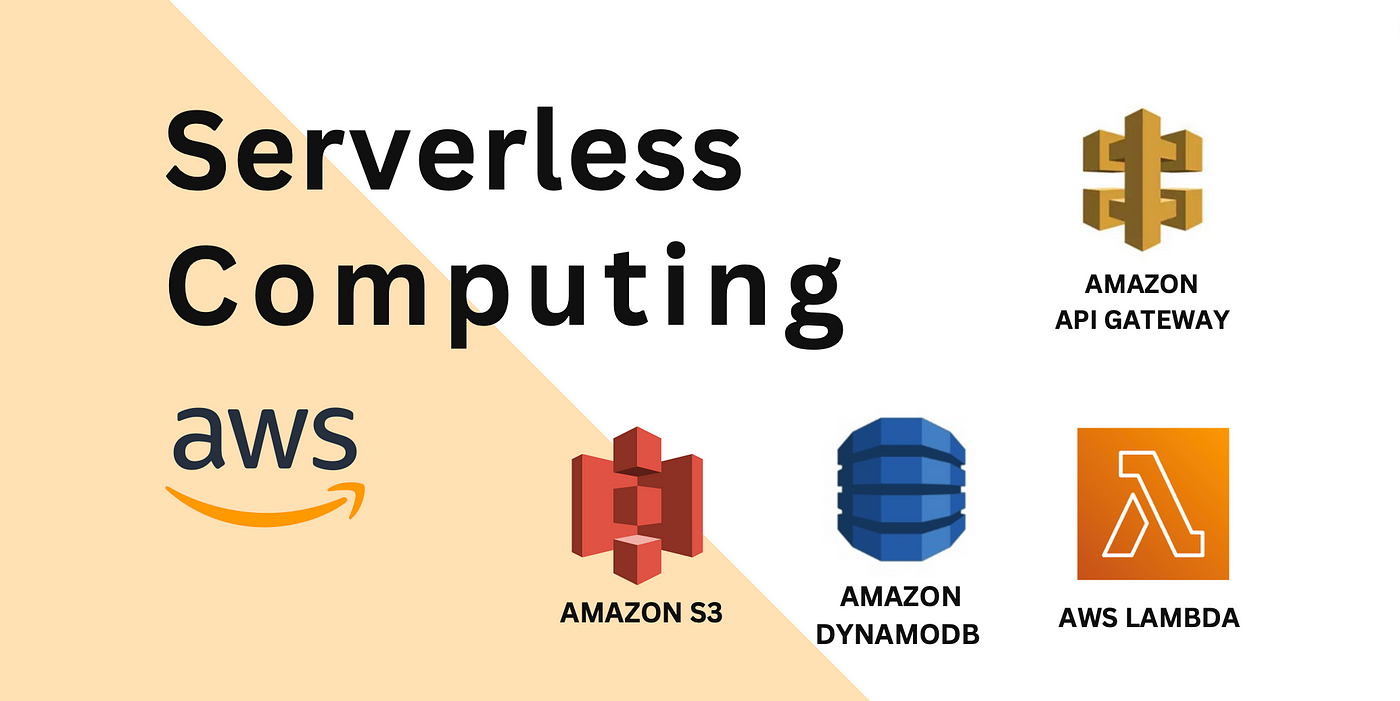
In recent years, the emergence of serverless architecture has transformed the way we design and deploy applications in the cloud. Gone are the days of managing servers and infrastructure. In this blog post, we will dive into the concept of AWS's serverless architecture, and its key differentiators from traditional server-based approaches, and explore the cutting-edge world of AWS serverless architecture.
Serverless architecture is a modern approach to application development that has gained significant popularity in recent years. It offers a new perspective on building and deploying software applications, where the focus shifts from provisioning and managing servers to a more event-driven and function-oriented model. In a serverless architecture, developers can focus on writing code for specific functions or services without worrying about the underlying infrastructure. The servers are dynamically and transparently managed by the cloud provider, enabling automatic scaling, high availability, and cost optimization. By leveraging the power of cloud services, serverless architecture allows developers to focus on creating value and delivering seamless experiences to users. So, let's dive deeper into this exciting concept! 🚀
Understanding Serverless Architecture
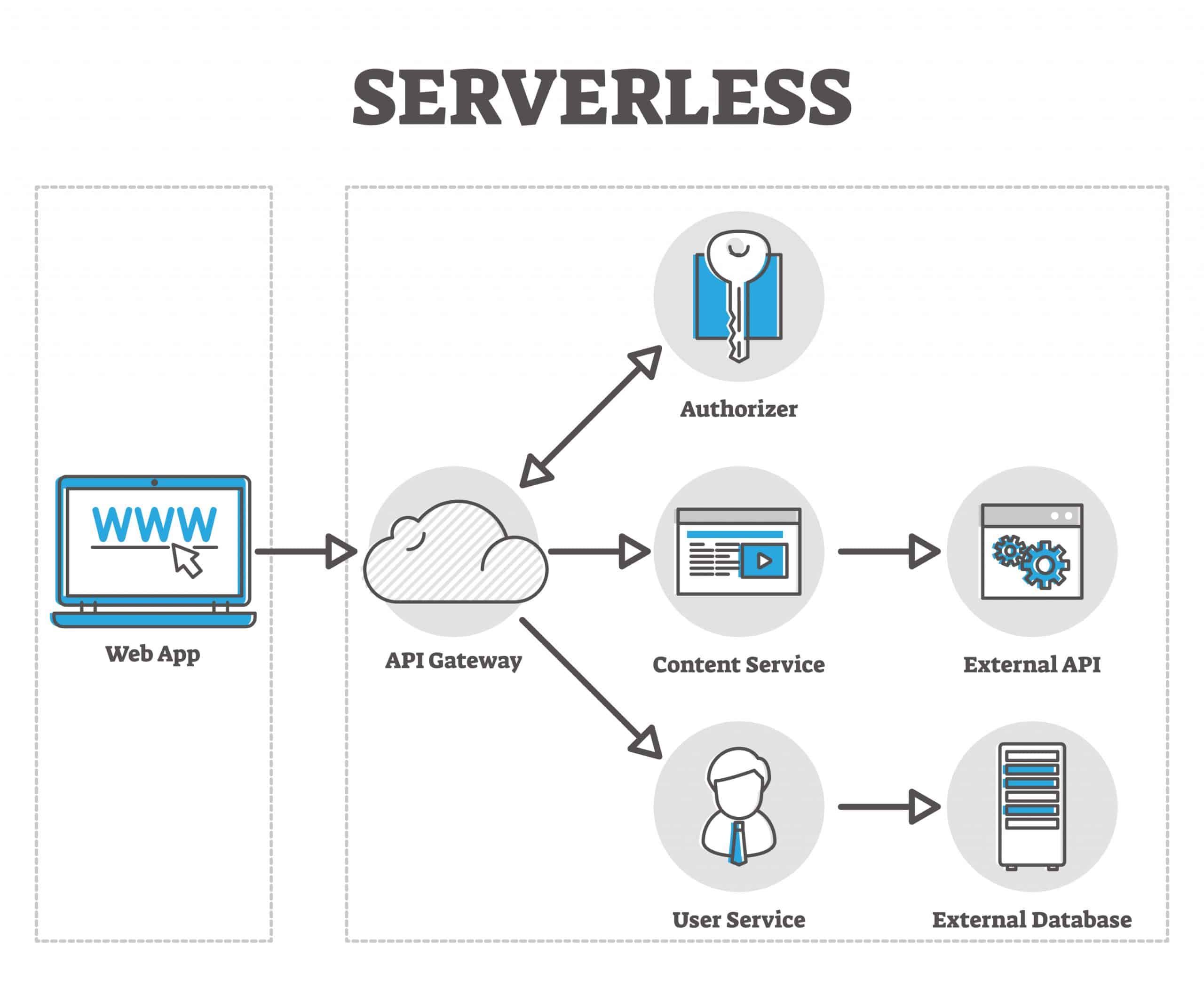
Serverless architecture is a paradigm shift in application development that aims to streamline the process, reduce complexity, and enhance scalability. At its core, serverless architecture eliminates the need for traditional server maintenance, provisioning, and scaling. Instead, developers can focus solely on writing code for specific functions or services, which are executed in a serverless environment provided by a cloud service provider.
In a serverless architecture, applications are composed of small, self-contained functions that perform specific tasks. These functions are triggered by events such as user actions, database updates, or scheduled events. When an event occurs, the corresponding function is automatically executed, and resources are allocated dynamically as needed. This on-demand scaling ensures that applications can handle varying workloads efficiently and eliminates the need to overprovision resources.
One of the key advantages of serverless architecture is its inherent scalability. With traditional architectures, scaling up or down typically involves manually provisioning or adjusting server capacity. However, in a serverless setup, the cloud provider takes care of this automatically, ensuring that the application can handle sudden spikes in traffic and scale down during periods of low activity. This flexibility allows businesses to optimize resource utilization and only pay for the actual computing resources used, leading to potential cost savings.
Another notable benefit of serverless architecture is improved maintenance and operational efficiency. By offloading server management to the cloud provider, developers and organizations can shift their focus from infrastructure maintenance to developing and delivering application features. The cloud provider takes care of tasks such as server updates, patching, and monitoring, reducing the operational burden and freeing up resources for innovation.
In serverless architecture, code functions go to sleep to optimize resource utilization and minimize costs. When a code function is idle and does not process any requests, it becomes inactive and relinquishes its allocated resources. This allows the underlying infrastructure to reallocate those resources to other functions or applications that require them. By going to sleep, the code function conserves computing power and reduces the total runtime, resulting in lower operational costs. However, it's important to note that serverless platforms usually have configurable timeouts that determine how long a function can remain idle before it is terminated, ensuring efficient resource utilization while still providing responsiveness to incoming requests. So, the concept of code functions going to sleep in serverless architecture is based on the principles of elasticity and cost-efficiency. 😴💤
Furthermore, serverless architecture promotes modular and decoupled application design. With functions serving as independent building blocks, developers can create applications that are composed of loosely coupled components. This modularity enhances code reusability, simplifies testing and debugging, and makes applications more resilient to failures in specific functions.
However, it's important to note that serverless architecture is not a one-size-fits-all solution. Certain use cases, such as long-running processes or applications with persistent connections, may not be suitable for a serverless approach. Understanding the strengths and limitations of serverless architecture is crucial to ensuring its appropriate application.
Understanding Client-Server Architecture
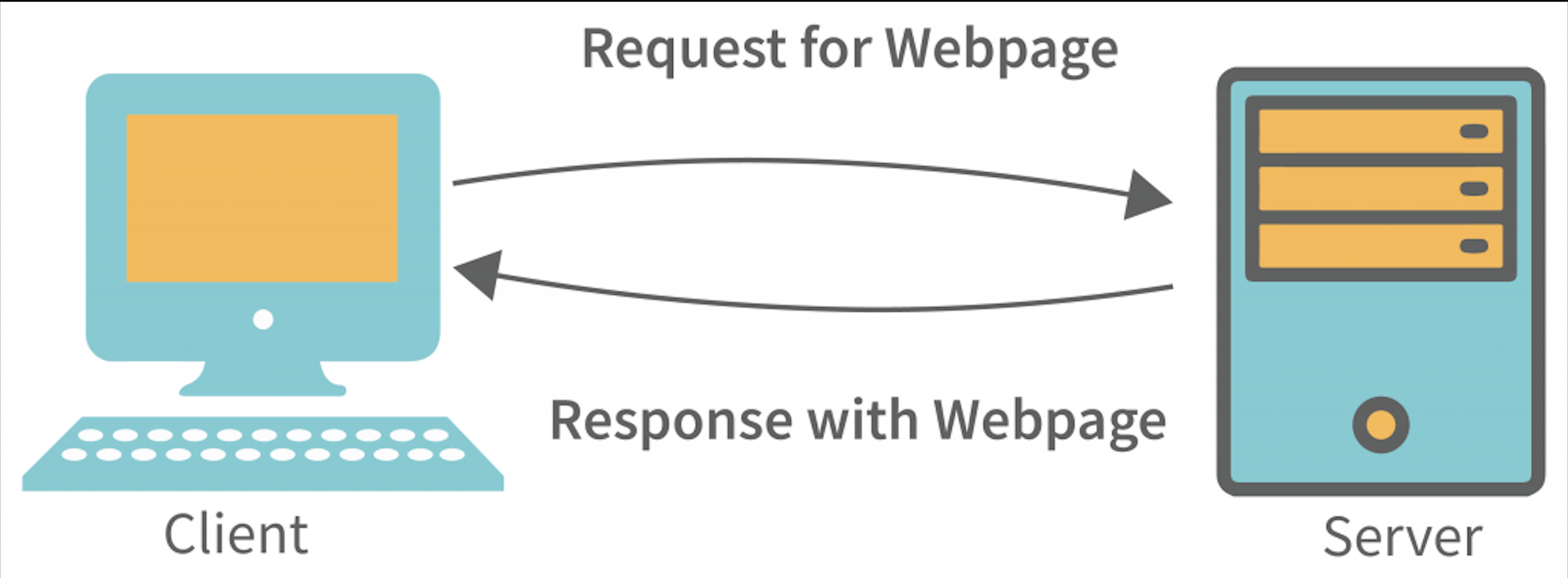
Server-based architecture, also known as client-server architecture, is a widely used computing model in which the processing tasks and data storage are carried out by dedicated servers. In this architecture, clients, which can be devices or applications, interact with the server to request data or services. The server, often a powerful machine with high computational capabilities, handles these requests, processes the necessary operations, and responds to the clients. This division of labour between the server and clients allows for distributed computing and centralized control.
At the core of the server-based architecture is the client-server relationship. Clients are typically lightweight devices or applications that rely on the server to perform complex tasks. They send requests to the server, which receives, interprets, and fulfils these requests. The server acts as a central authority, coordinating and managing various resources to provide services to the clients. This architecture enables efficient resource utilization, as clients can offload processing-intensive tasks to the server, which is designed to handle such workloads effectively.
One of the key advantages of server-based architecture is its scalability. Since the processing power and storage capabilities reside on dedicated servers, scaling up or down can be done independently of the clients. This enables organizations to handle increased user demand or expand their services without requiring clients to upgrade their hardware or software. By adding additional servers or upgrading existing ones, the server infrastructure can handle a higher volume of requests while maintaining performance and responsiveness.
Another benefit of server-based architecture is centralized control and data management. The server acts as a single point of administration, enabling consistent management of resources, security measures, and data integrity. By centralizing data storage on the server, organizations can enforce access control policies, ensure data consistency, and perform backups and disaster recovery measures more effectively. Additionally, centralized control simplifies software updates and maintenance, as changes can be deployed to the server and propagated to the clients seamlessly.
However, server-based architecture is not without its challenges. It requires reliable and stable server infrastructure, as any server failures or network disruptions can impact the availability of services to clients. Moreover, the scalability and performance of the server may become bottlenecks if not properly planned and implemented. Additionally, Client-Server communication introduces network latency, especially when clients and servers are geographically separated. Efficient network design and optimization techniques must be employed to mitigate these challenges and ensure optimal performance.
Difference between Serverless and Server-Based Architecture
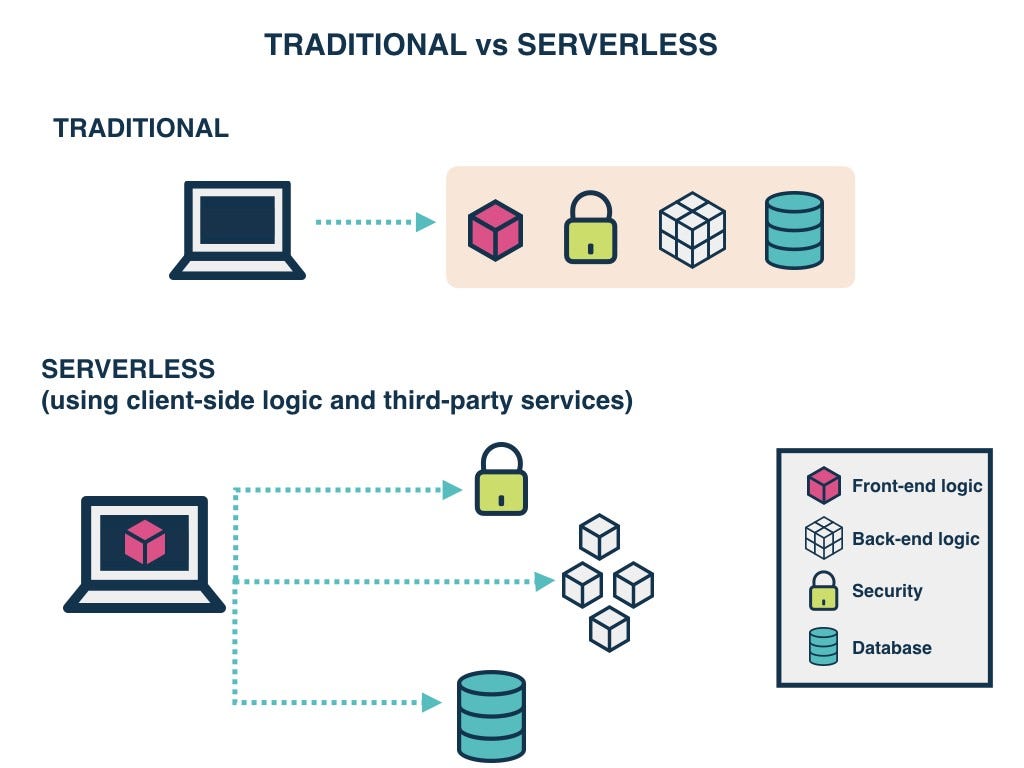
Server-Based Architecture:
Infrastructure Management: In server-based architecture, organizations are responsible for managing their own servers, including provisioning, maintenance, and scaling. This requires expertise in server administration and can be time-consuming.
Resource Allocation: Server-based architecture requires businesses to allocate and manage resources such as CPU, memory, and storage capacity based on anticipated demand. Balancing resource allocation can be challenging, leading to inefficient resource utilization.
Scalability: Scaling in server-based architecture often involves manual intervention. Organizations need to anticipate peak loads and provision additional servers in advance, which may result in either over-provisioning or under-provisioning of resources.
Cost Structure: In a server-based architecture, organizations need to invest in server infrastructure, which includes hardware, maintenance, and power costs. Fixed costs can be high, regardless of the actual usage or demand.
Development Focus: Developers in server-based architecture are more involved in low-level infrastructure management, such as server configuration, deployment, and maintenance. This can divert their focus from core development tasks and slow down the development process.
Serverless Architecture:
Managed Infrastructure: Serverless architecture offloads infrastructure management to cloud service providers. They handle server provisioning, auto-scaling, maintenance, and updates, allowing organizations to focus on application development.
Granular Scaling: Serverless architecture enables automatic scaling of individual functions based on demand. Resources are allocated dynamically, ensuring optimal utilization and eliminating the need for manual scaling.
Pay-as-You-Go Model: Serverless architecture operates on a pay-as-you-go model, where organizations are billed based on actual usage or the number of requests. This results in cost efficiency, as businesses only pay for the compute resources consumed during the execution of their functions.
Event-Driven Execution: Serverless architecture follows an event-driven model, where functions are triggered by events such as HTTP requests, database changes, or scheduled events. This asynchronous execution allows for efficient handling of tasks and promotes modularity.
Rapid Development: Serverless architecture allows developers to focus solely on writing code for specific functions or services. It enables rapid development cycles, and code reusability, and simplifies testing and debugging processes.
High Availability: Serverless architectures leverage the infrastructure redundancy provided by cloud providers. This ensures high availability of applications, with built-in fault tolerance and automatic failover capabilities.
Vendor Management: Serverless architecture reduces vendor management complexity as organizations rely on cloud service providers for infrastructure management. This eliminates the need for server administration skills and allows access to the latest technologies and updates.
Key Differentiators of Serverless Architecture
Scalability: Serverless architecture enables automatic scaling of resources based on demand. It allows applications to handle sudden spikes in traffic without manual intervention, ensuring efficient resource allocation and cost optimization.
Cost Efficiency: With serverless architecture, businesses only pay for the actual compute resources used, as the cloud provider handles resource provisioning and management. This pay-as-you-go model can result in significant cost savings compared to traditional infrastructure setups.
Operational Efficiency: Serverless architecture relieves developers from infrastructure management tasks, such as server provisioning, updates, and monitoring. It allows teams to focus on developing features and delivering value, improving overall operational efficiency.
Event-driven Architecture: Serverless applications are event-driven, where specific functions or services are triggered by events such as user interactions, database updates, or scheduled events. This event-driven model enables efficient handling of asynchronous tasks and promotes modularity.
High Availability: Serverless architectures typically leverage the infrastructure and redundancy capabilities offered by cloud providers. As a result, applications built on serverless frameworks can achieve high availability, minimizing downtime and ensuring seamless user experiences.
Fault Tolerance: Serverless architecture promotes fault tolerance by decomposing applications into smaller, independent functions. If a particular function encounters an error or failure, it can be isolated, allowing other functions to continue running smoothly.
Flexibility: Serverless architecture offers flexibility in terms of language choice and compatibility. Developers can write functions using their preferred programming languages, allowing them to work in familiar environments and integrate existing codebases seamlessly.
AWS's Serverless Architecture
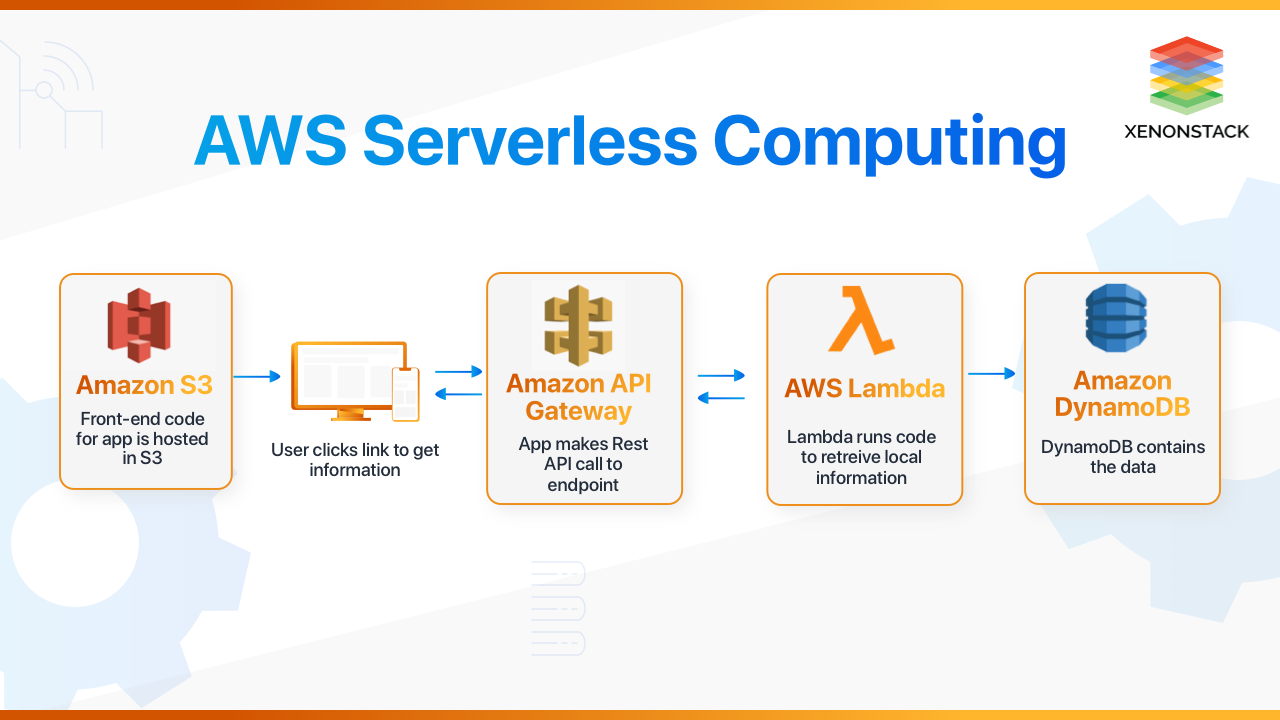
AWS's Serverless Architecture is an innovative approach to building applications where developers can focus on writing code without the need to manage traditional server infrastructure. It leverages AWS Lambda, a powerful serverless computing service, as its core component.
In a traditional server-based architecture, developers have to provision, manage, and scale servers to host applications. This can be a complex and time-consuming process requiring expertise in infrastructure management. However, with AWS's Serverless Architecture, developers can simply write their application code and let AWS handle the rest.
AWS Lambda is a compute service that allows developers to run their code in response to events, without the need to provision or manage servers. It automatically scales based on the incoming load, ensuring high availability and cost efficiency. Developers can upload their code to Lambda and define triggers or events that will invoke the code. These triggers could be anything from an HTTP request, file upload, database update, or even a scheduled event.
With AWS Lambda as the foundation, other AWS services seamlessly integrate into the Serverless Architecture. For example, Amazon API Gateway provides a fully managed service to create and manage APIs that can serve as the front end for serverless applications. It handles authentication, authorization, and request routing, allowing developers to focus on the business logic.
AWS Serverless Architecture also benefits from services like AWS DynamoDB for NoSQL database storage, AWS S3 for file storage, and AWS SNS/SQS for messaging and event-driven communication. These services integrate effortlessly, allowing developers to build scalable and resilient applications without worrying about infrastructure management.
One of the key advantages of AWS's Serverless Architecture is its pay-per-use pricing model. Developers are billed only for the actual execution time of their code and the resources consumed during that time, avoiding the cost of idle servers. This makes it highly cost-effective, especially for applications with sporadic or variable workloads.
Additionally, the Serverless Architecture promotes rapid development and deployment cycles. Developers can focus on writing code and bring new features to market faster. The infrastructure management overhead is significantly reduced, allowing teams to iterate and innovate quickly.
AWS offers a comprehensive suite of services that empower developers to build scalable, highly available, and cost-effective serverless applications. Some prominent services include:
AWS Lambda: AWS Lambda is a serverless computing service that lets you run code without provisioning or managing servers. You can execute your code fragments in response to events or API requests, and Lambda automatically scales resources to match the workload.
Amazon API Gateway: API Gateway enables developers to create, deploy, and manage robust APIs that can trigger AWS Lambda functions. It acts as a bridge between your serverless functions and external clients.
AWS DynamoDB: DynamoDB is a fully managed NoSQL database service that provides low latency, high throughput, and automatic scaling. It seamlessly integrates with Lambda and other AWS services, offering a powerful storage option for serverless applications.
AWS Step Functions: Step Functions allow you to build serverless workflows or state machines that coordinate your Lambda functions, enabling complex business processes and long-running tasks.
Pricing - September 2023
It's important to note that pricing for cloud services is subject to change. Here is a general overview of the AWS serverless architecture's pricing model as of September 2023:
AWS Lambda: Lambda counts a request each time it starts executing in response to an event notification trigger, such as from Amazon Simple Notification Service (SNS) or Amazon EventBridge, or an invoke call, such as from Amazon API Gateway, or via the AWS SDK, including test invokes from the AWS Console. Duration is calculated from the time your code begins executing until it returns or otherwise terminates, rounded up to the nearest 1 ms*. The price depends on the amount of memory you allocate to your function. The AWS Lambda free tier includes one million free requests per month and 400,000 GB-seconds of compute time per month, usable for functions powered by both x86, and Graviton2 processors, in aggregate. Additionally, the free tier includes 100GiB of HTTP response streaming per month, beyond the first 6MB per request, which are free.
Amazon API Gateway: With Amazon API Gateway, you only pay when your APIs are in use. There are no minimum fees or upfront commitments. For HTTP APIs and REST APIs, you pay only for the API calls you receive and the amount of data transferred out. There are no data transfer out charges for Private APIs. However, AWS PrivateLink charges apply when using Private APIs in API Gateway. The API Gateway free tier includes one million HTTP API calls, one million REST API calls, one million messages, and 750,000 connection minutes per month for up to 12 months.
AWS DynamoDB: There are two pricing options available for Amazon DynamoDB: on-demand capacity mode and provisioned capacity mode. With two pricing models, DynamoDB allows you to choose the best pricing option for your workload. You can read more about them in the documentation itself.
Conclusion
In conclusion, AWS's Serverless Architecture revolutionizes the way applications are built and deployed. By leveraging AWS Lambda and its seamless integration with other AWS services, developers can focus on writing code and delivering innovative solutions without the complexities of managing traditional servers. The pay-per-use pricing model ensures cost efficiency, eliminating the need for idle resources. The rapid development and deployment cycles empower teams to iterate quickly and bring new features to market faster. AWS's Serverless Architecture is a game-changer, enabling developers to build scalable, resilient, and cost-effective applications that drive business growth and customer satisfaction. 🌟
Happy serverless coding! ✨🚀
Subscribe to my newsletter
Read articles from Bhavesh Yadav directly inside your inbox. Subscribe to the newsletter, and don't miss out.
Written by

Bhavesh Yadav
Bhavesh Yadav
Passionate full stack developer with expertise in both front-end and back-end technologies. Creating seamless digital experiences through innovative solutions.